Photographs: Courtesy, Bio-diversity Conservation India (Pvt) Ltd. Shobha Warrier in Bengaluru
Chandrasekhar Hariharan, chief executive officer of Bio-diversity Conservation India (Pvt) Ltd, started the company in 1993 with borrowed money, with the sole intention of building eco-sensitive homes.
Today, BCIL is dedicated to the creation of urban eco-habitats that are environmentally sensitive and water- and energy-efficient.
Building green homes and caring for nature have fetched him many national and international awards, including the 2009 CII-ITC Centre for Excellence of Sustainable Development award.
In an interview with Rediff.com, Hariharan talks about how he, an economist, became an eco-sensitive builder of urban homes.
. . .
Going from Rs 1 lakh to Rs 400 crore, with via eco-sensitive homes!
How an economist becomes an entrepreneur
It all started around 1986-87 when I understood what development economics was. The thought of water and energy came to my mind when we were sitting in Dehradun working for an NGO.
After that, I made several visits to many villages mainly to understand water and how conservation of water works in the villages.
That is how my tryst with buildings, vernacular architecture, and the need for drawing from traditional knowledge in water and energy management started.
My understanding of buildings increased when I landed at Uttar Kasi after an earthquake. In the next 9 months, we trained about 2,000 ordinary people as masons to build houses that withstood earthquakes.
. . .
Going from Rs 1 lakh to Rs 400 crore, with via eco-sensitive homes!
On making homes for urban India
Over those years I realised that you need donor funds to work in rural areas. Working on donor funds with an agenda, that more serves the donor's objectives than our own, does not bring us as much satisfaction.
Besides, there was no accountability, or direct impact on beneficiaries.
I realised too, that protecting these vast ecosystems was important, but reducing abuse of natural resources in our cities was an equally pressing need.
It gave us the chance to offer value to people who were willing to pay for it, and had us accountable to them. So the choice of urban housing seemed natural in 1994 when the move was made. Nature is more abused in urban India.
. . .
Going from Rs 1 lakh to Rs 400 crore, with via eco-sensitive homes!
How a business model comes in place
I thought, if I could reduce the abuse of natural resources in the city while offering value to a customer, I had a business model. I wrote on a calendar, a simple nine-line business model.
If I could build 83 houses of 2,000 sq.ft in 30 acres with each acre bought at Rs 1 lakh (Rs 100,000), I would be able to generate Rs 18 crore (Rs 180 million) from the business model. I didn't know then how long it would take for me to work the plan into reality.
I decided to come back to Bengaluru and start my project here.
I wanted a rural-urban kind of landscape and the project was aimed at those who could afford to be a little away from the city and enjoy the rural ambience. It was to bridge the gap between making a living and living.
. . .
Going from Rs 1 lakh to Rs 400 crore, with via eco-sensitive homes!
Launching BCIL
In 1995 February, we launched the company. Through a broker I found 41 acres of land with banyan trees, peepal trees, gulmohar and all the sapta vrikshas. The price was Rs 97 lakh (Rs 9.7 million) but I had no money. I borrowed Rs 1 lakh (Rs 100,000) from a financier and got Rs 83, 000 after the discount.
I met the owner of the land and paid an advance of Rs. 83,000, and I was to pay the rest in two years' time.
Along with my friends, I organised a dinner and invited some chosen people and made a presentation of what we were planning to build.
In the first year, we sold five homes, and in the second, seven, at Rs 120 per sq.ft.
At that time, consumers were not that aware of eco-sensitive homes. So, we sold only 5-6 homes every year. By 2000 end, we finished the first project, that is, in 32 months.
The cost was about 11-and-a-half crore rupees (Rs 115 million) and we made 50 pre cent gross profit. Eventually, after all the expenses, we made Rs 3 -4 crore (Rs 35-40 million) profit which was good, having started with Rs 1 lakh.
Today, after 15 years, it is considered as one of the ten most coveted properties in Bengaluru.
. . .
Going from Rs 1 lakh to Rs 400 crore, with via eco-sensitive homes!
On changing the attitude of people to ecologically sensitive homes
Until 2005, it was very difficult explaining to a customer what he was buying. They were not that knowledgeable about, for example, how much difference rain water harvesting could do to your water management system.
It has changed considerably now mainly because buying water has hurt them badly. In every part of Bengaluru, the water table has gone down by 230 to 250 ft in the last 15 years.
In the last 15 years, they have also understood that power shut down is going to be there. They know that the deficit between demand and supply is going to widen. Power tariffs have doubled in the last 12 years and will keep increasing.
. . .
Going from Rs 1 lakh to Rs 400 crore, with via eco-sensitive homes!
On making green buildings
In 2003, I heard an architect speak at a meeting in Mumbai that 2 per cent of the country's landmass, and 75 per cent of the natural resources are consumed by the 50 per cent who occupy urban India.
I came back from there thinking all the time how to make an apartment block green and eco-sensitive.
I bought 5 acres of land for Rs 5 crore (Rs 50 million) and built around 100 flats of 2,000 sq.ft., which is like building 19 homes in one acre. Remember, the industry builds 70 to 80 homes in an acre.
We are not builders. We are a builder-technology company. We offer homes that offer you advantages of living together in a community.
We build with no bricks, no clay blocks, no clay tiles, no ceramic or vitrified tiles for bathrooms or for swimming pools. We build with no forest timber, no incandescent bulbs, no regular fluorescent lamps, no halogen lamps.
In our residential campus creations, no waste is exported, no municipal water is imported. We have evolved our technologies to a point where we now build projects with no power imported from the grid!
. . .
Going from Rs 1 lakh to Rs 400 crore, with via eco-sensitive homes!
We use no geysers for hot water in our homes, and if we do, we use systems that bring down energy use by 70 per cent of the normal geysers. We use no synthetic fertilizers or pesticides.
At the campus level, there is no kitchen waste exported. There is no HCFC, CFC or Ozone Depleting Substances in the natural air-conditioning we offer in each of our homes.
We use no chemicals for treating water for drinking, or for swimming pools, or for water-proofing compounds at the time of construction. We use no toxic paints for walls.
We use nearly no plastering and paints for external surfaces. We use diesel for gensets only for about 30 per cent of the needed fuel. The rest 70 per cent is renewable energy or bio-fuels.
We use only LEDs for external lights; not even CFLs are used for such external lighting for gardens, street-lights and such.
We use only solar-based or other hybrids for external lighting, with no reliance on either grid power or gensets for such campus lighting.
Use of concrete in construction is optimized with intelligent structural designs that also look at the use of materials that cool homes, and use less transport energy.
But we help people save up to Rs 5-6 lakh (Rs 500,000-600,000) in the first five years of living in such homes.
. . .
Going from Rs 1 lakh to Rs 400 crore, with via eco-sensitive homes!
Future of nature
It's a very grim scenario. Our cities are going to double in population in the next 15 years. What we saw in the last 30 years is nothing compared to what we are going to see now.
We have to seriously deal with water, energy and waste management.
The growth of the company
Having started with borrowed Rs 1 lakh, today, the company has a project value base of Rs 408 crore (Rs 4.08 billion). After having built 600 homes worth Rs 100 crore (Rs 1 billion) so far, in the next 26 months, we will execute Rs 230 crore (Rs 2.30 billion) worth projects.
Typical of many such start-ups, the capital of the company has been low: with a capital base of Rs 8 crore (Rs 80 million), the company has about Rs 150 crore (Rs 1.50 billion) as assets.
On an average, the company has shown sales of about Rs 30 crore (Rs 300 million) with these sustainably built homes. We expect to achieve a healthy doubling of sales performance in the current financial year. The target for the next financial year is set at Rs 100 crore.
From its modest start in 1995 with just 6 people, the company has risen to have 200 people now.
. . .
Going from Rs 1 lakh to Rs 400 crore, with via eco-sensitive homes!
Awards received
In the last eight years, we have received 14 awards.
In the last five years itself, I have received six awards from five countries, and they include the San Diego-based CoreNet Global Award for leadership in sustainable design, April 2010, Realty Plus Excellence Award for 'Environment Friendly Project of the Year' April 2010 India, Udyog Rattan Award for Excellence, January 2010 Bangkok, Thailand, Ryutaro Hashimoto Award, IGES, 2008 Kanagawa, Japan, and ADB Water Champion Award, 2007, Manila, Philippines.
I am humbled by the awards and recognition. What we are doing is common sense and integrating systems which are already tested.

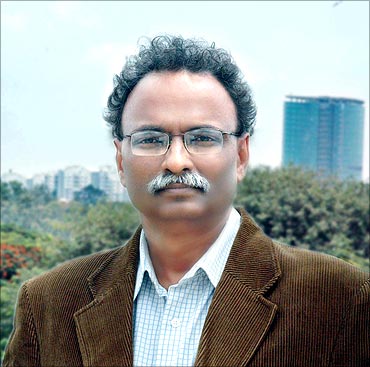
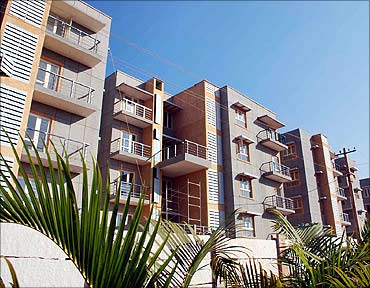
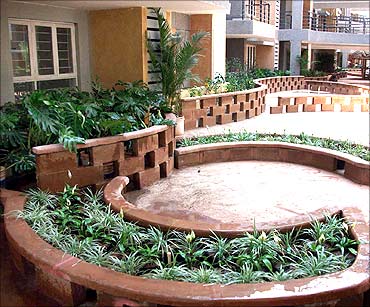




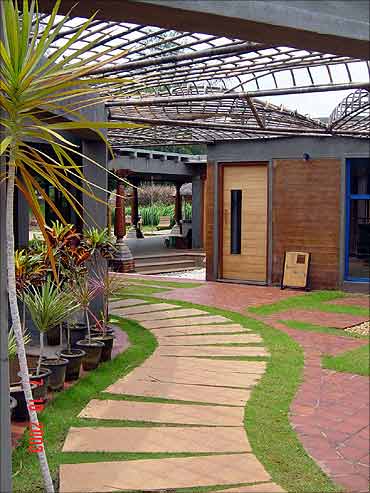
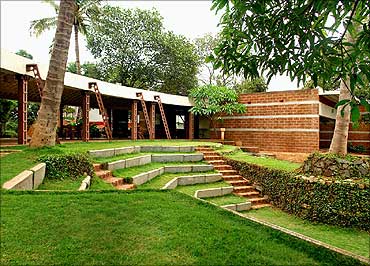
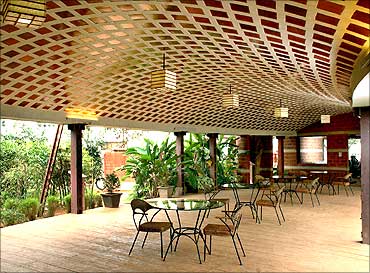
article